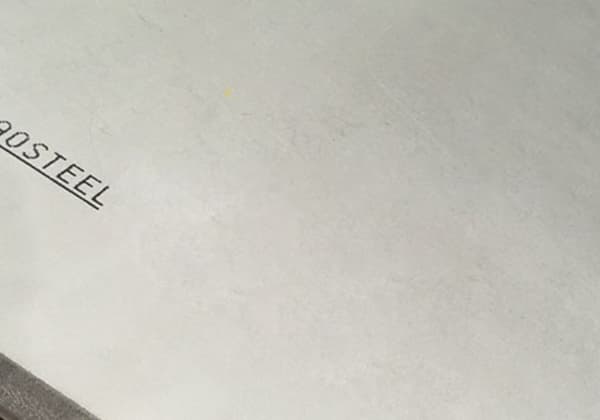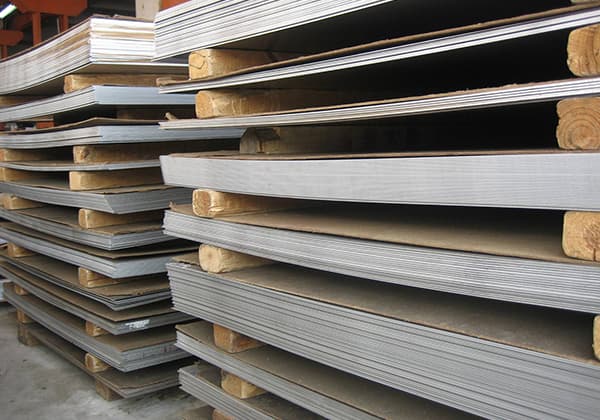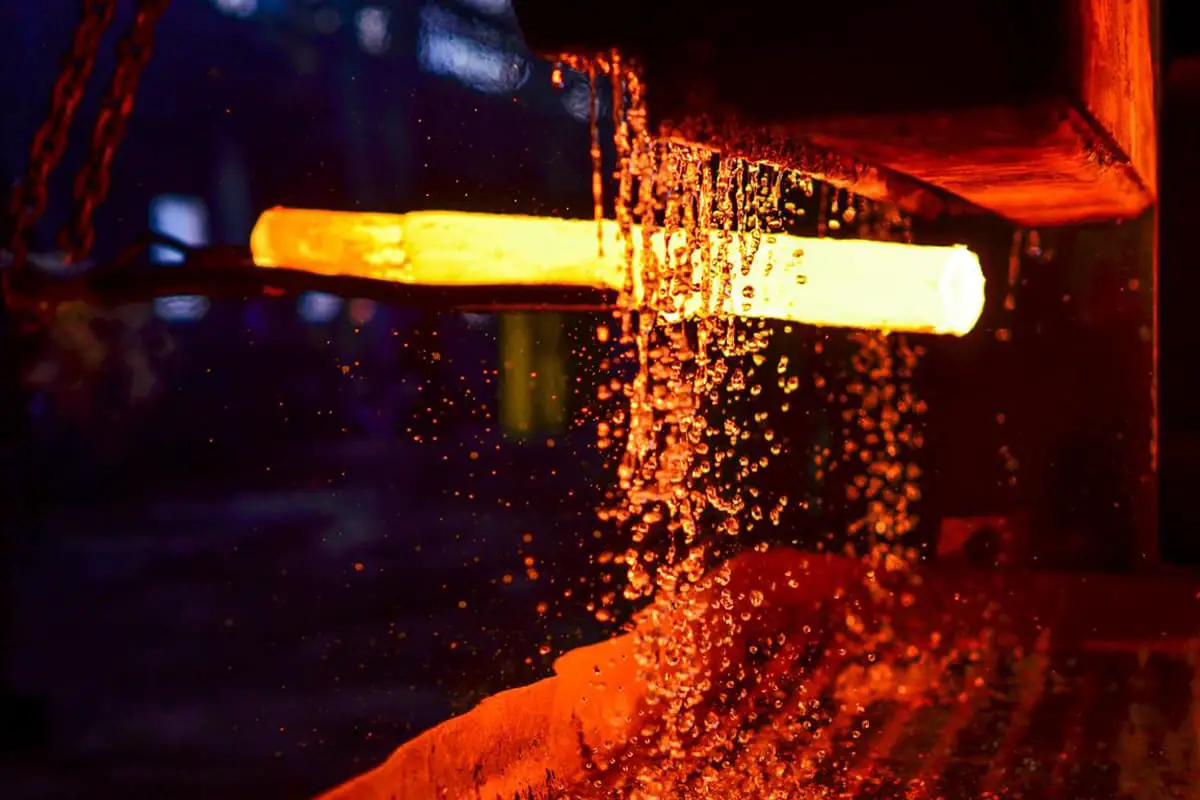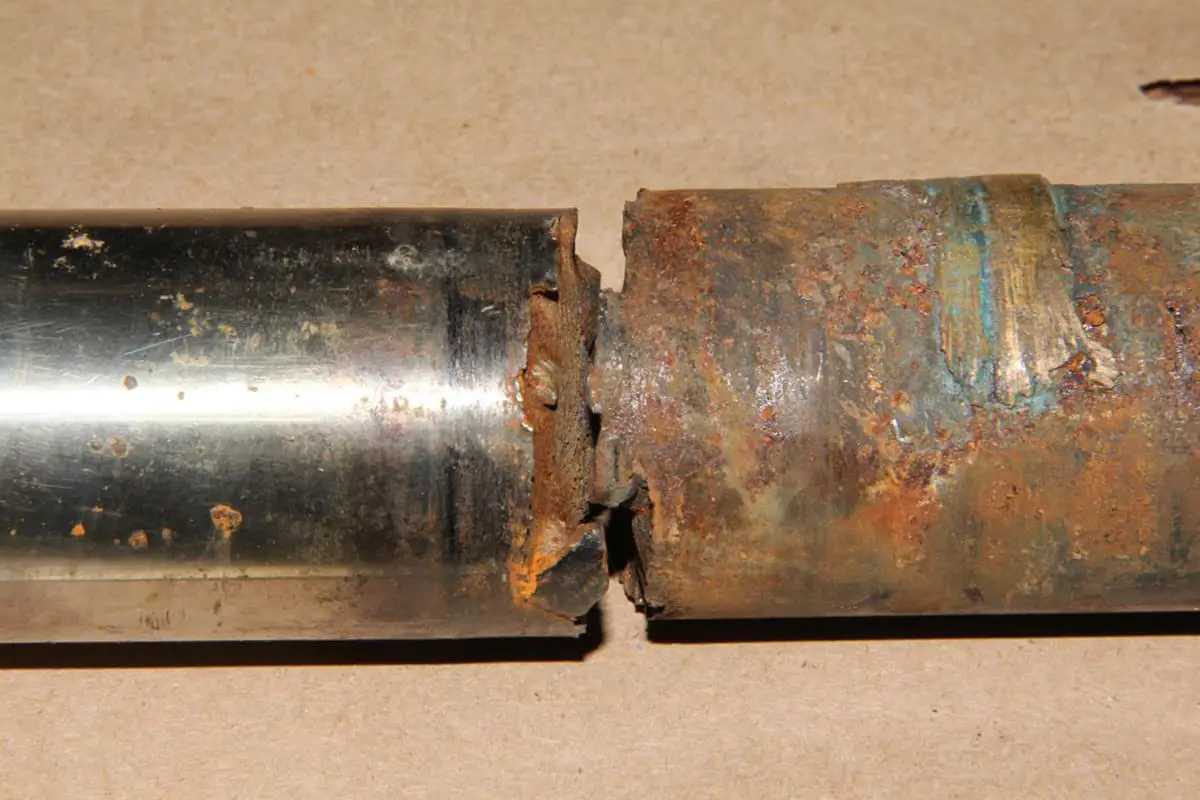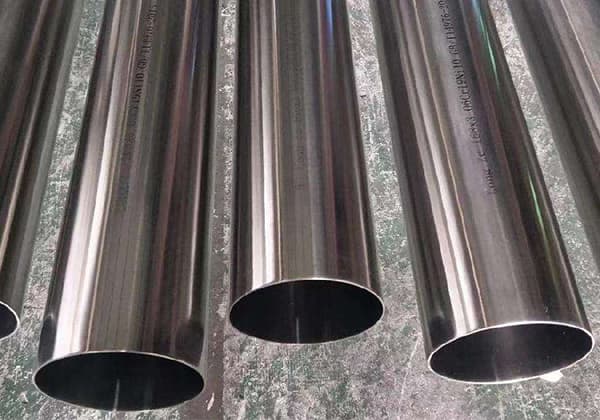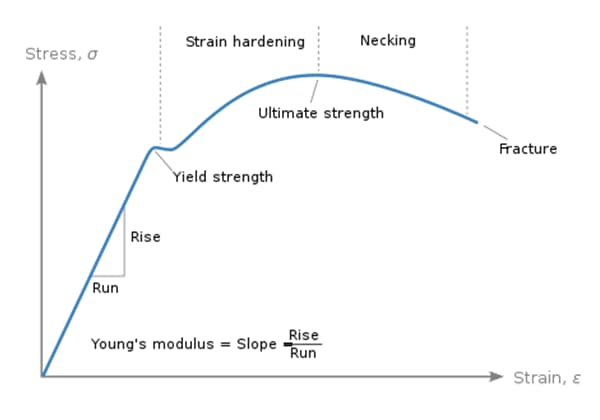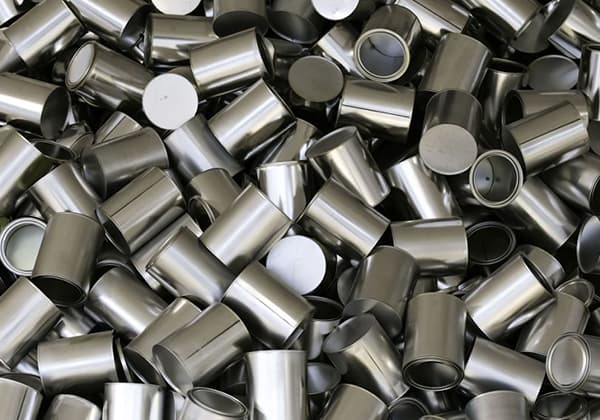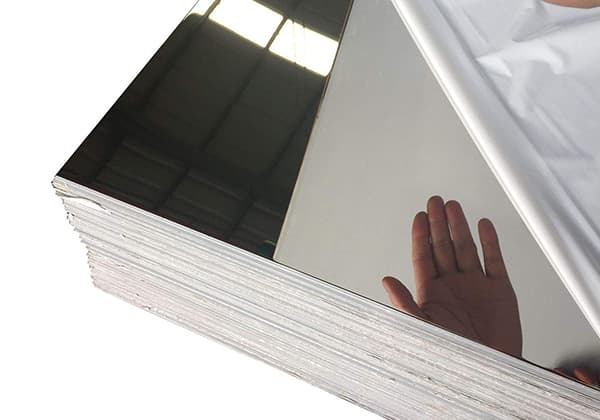
Have you ever wondered about the different types of stainless steel and their applications? In this blog post, we’ll dive into the world of stainless steel grades, exploring their unique characteristics and uses. Our expert mechanical engineer will guide you through the complexities, providing insights to help you select the perfect grade for your needs. Get ready to expand your knowledge and discover the fascinating world of stainless steel!
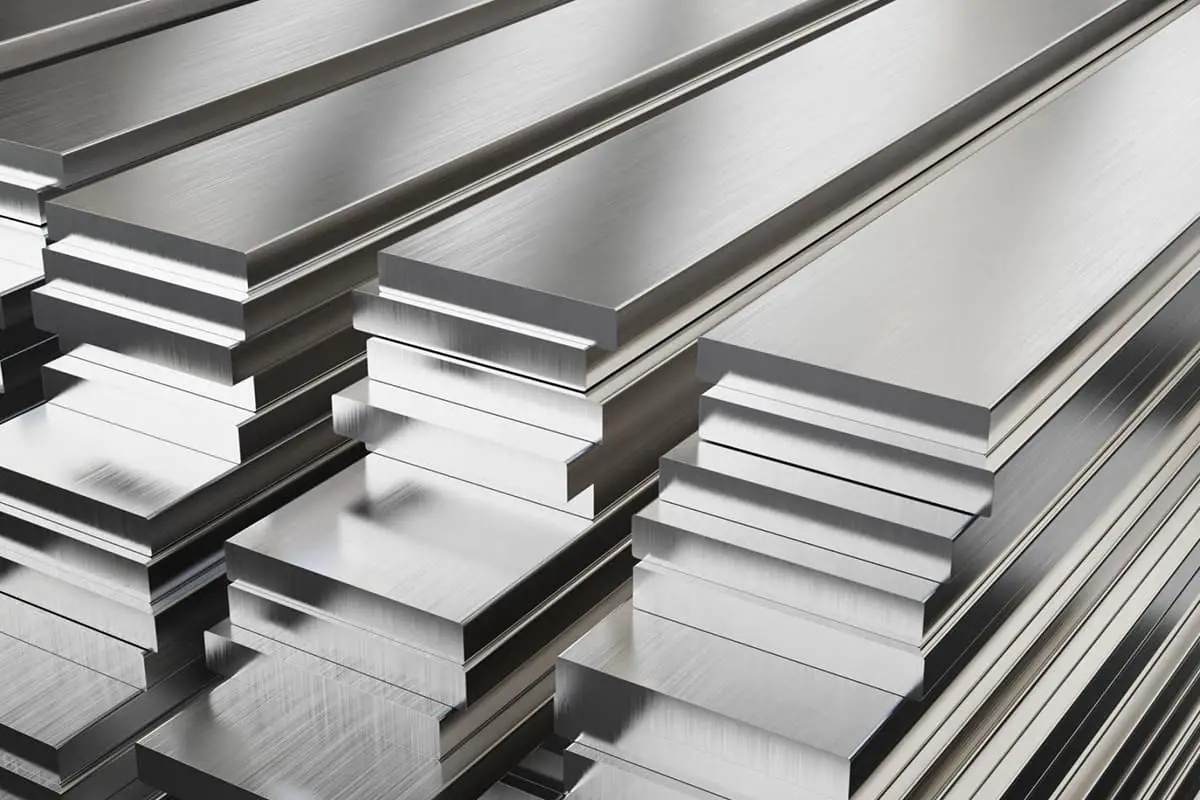
The following information will provide you with a comprehensive understanding of the different grades of stainless steel, enabling you to make an informed decision for your specific application.
Presently, the most widely used austenitic stainless steels in industrial applications are grades 304 and 316. These grades offer an excellent combination of corrosion resistance, formability, and mechanical properties.
Grade 304, also known as 18/8 stainless steel, contains approximately 18% chromium and 8% nickel. It offers good corrosion resistance in many environments and is widely used in food processing equipment, kitchen appliances, and architectural applications. Grade 304L, a low-carbon variant, provides enhanced weldability and resistance to intergranular corrosion.
Grade 316 contains molybdenum (typically 2-3%), which significantly enhances its corrosion resistance, particularly against chlorides and other harsh chemicals. This makes it ideal for marine environments, chemical processing equipment, and pharmaceutical industries. The 316L variant, with lower carbon content, offers improved weldability and resistance to sensitization during welding or high-temperature service.
In terms of cost, 304 stainless steel is generally 20-30% less expensive than 316 stainless steel due to its lower alloy content. However, the long-term durability and reduced maintenance requirements of 316 in more aggressive environments can often justify its higher initial cost.
When selecting the appropriate type of stainless steel, consider factors such as:

This following table summarizes the different series of stainless steel and their specific types, along with their key characteristics and typical applications.
| Series | Stainless Steel Type | Characteristics and Applications |
|---|---|---|
| 200 | General | Contains chrome, nickel, manganese; austenitic stainless steel. |
| 300 | General | Contains chrome, nickel; austenitic stainless steel. |
| 301 | Specific | Good malleability, quickly hardened, good weldability, superior abrasion resistance and fatigue strength to 304. |
| 302 | Specific | Same corrosion resistance as 304, higher strength due to high carbon content. |
| 303 | Specific | Easier machining than 304, small amounts of sulfur and phosphorus added. |
| 304 | Specific | General model, 18/8 stainless steel, GB grade 0Cr18Ni9. |
| 309 | Specific | Better temperature resistance than 304. |
| 316 | Specific | Used in food industry and surgical equipment, anti-corrosive, better anti-chloride corrosion resistance, “Marine steel”, used in nuclear fuel recovery. |
| 321 | Specific | Reduced corrosion risk at weld joints due to titanium, similar to 304. |
| 400 | General | Ferritic and martensitic stainless steel. |
| 408 | Specific | Good heat resistance, weak corrosion resistance, 11% Cr, 8% Ni. |
| 409 | Specific | Cheap, used as car exhaust pipe, ferritic (chrome steel). |
| 410 | Specific | Martensitic (high-strength chromium steel), good wear resistance, poor corrosion resistance. |
| 416 | Specific | Improved processing properties due to added sulfur. |
| 420 | Specific | “Blade grade” martensitic steel, used for surgical tools, very bright. |
| 430 | Specific | Ferritic, decorative use, good forming property, poor temperature endurance and corrosion resistance. |
| 440 | Specific | Used for razor blades, models: 440A, 440B, 440C, 440F (easily processed). |
| 500 | General | Heat-resistant chromium alloy steel. |
| 600 | General | Martensite precipitation hardening stainless steel. |
| 630 | Specific | Common precipitation hardened type, 17-4; 17% Cr, 4% Ni. |
Stainless steel can be classified based on various criteria, including chemical composition, properties, application, functional characteristics, and metallographic structure. This comprehensive classification system helps in selecting the most appropriate stainless steel grade for specific industrial applications.
Chemical Composition:
Properties and Application:
Functional Characteristics:
Metallographic Structure:
Understanding these classifications is crucial for engineers and manufacturers to select the most suitable stainless steel grade based on specific requirements such as corrosion resistance, mechanical properties, formability, weldability, and cost-effectiveness. The choice of stainless steel type significantly impacts the performance, longevity, and overall success of industrial applications across various sectors, including chemical processing, food and beverage, aerospace, and marine industries.
Comparison of mechanical properties of stainless steel
| Classification | Composition (%) | Hardenability | Corrosion-resistance | Machinability | Weldability | Magnetism | ||
|---|---|---|---|---|---|---|---|---|
| C | Cr | Ni | ||||||
| ferrite | <0.35 | 16 | 27 | / | Good | Good | Good | has |
| martensite | <1.20 | 11 | 15 | Self-hardening | has | has | bad | has |
| austenite | <0.25 | >16 | 7 | / | Good | Good | Good | / |
The above classification only considers the matrix structure.
In addition to the three basic types of stainless steel, it also includes composite stainless steel, such as martensite-ferrite and austenite-ferrite, as well as precipitation-hardening stainless steel, such as martensite-carbide stainless steel.
This table below provides a concise overview of each type of steel, highlighting their main features, examples, and typical applications.
| Type of S.S | Key Characteristics | Examples | Uses |
|---|---|---|---|
| Ferritic Steel | – Low-carbon chromium stainless steel. – Chromium content > 14%. – Contains elements like Mo, Ti, Nb, Si, Al, W, V. – Dominantly ferrite-forming elements. – Corrosion-resistant and oxidation-resistant. – Poor mechanical properties and processability. | Cr17, Cr17Mo2Ti, Cr25, Cr25Mo3Ti, Cr28 | Anti-acid structures, antioxidant steel. |
| Ferrite-Martensitic Steel | – In Y+A or δ phase at high temperatures. – Transforms to Y-M phase in cold conditions. – Consists of ferrite and martensite. – Ferrite amount varies. – Chromium content typically between 12-18%. – Partial hardening possible. | 0Cr13, 1Cr13, 2Cr13, Cr17Ni2, Cr17W4, Cr11MoV, etc. | Various applications, depends on specific grade. |
| Martensitic Steel | – In Y phase at quenching temperatures. – Transforms into martensite upon cooling. – Similar properties to ferritic-martensitic steel but higher mechanical performance. – No free ferrite in the structure. | 2Cr13, 2Cr13Ni2, 3Cr13, 13Cr14NiWVBA, etc. | Various applications similar to ferritic-martensitic steel. |
| Martensite-Carbide Steel | – High carbon content Fe-C alloy. – Contains 12% or more chromium. – Heated at normal quenching temperature. – Hardened structure of martensite and carbide. – Corrosion resistance equivalent to 12-14% chromium stainless steel. | 4Cr13, 9Cr18, 9Cr18MoV, 9Cr17MoVCo | Cutting tools, bearings, springs, medical instruments. |
| Austenitic Steel | – High concentration of stabilizing elements. – Broad Y-phase zone at high temperatures. – Austenitic structure at normal temperatures. – Can be strengthened by cold deformation. – Susceptible to intercrystalline and stress corrosion. | 18-8, 18-12, 25-20, 20-25Mo, Cr18Mn10Ni5, etc. | Various industrial applications, benefits from strain hardening. |
| Austenitic-Ferritic Steel | – Limited stable austenite elements. – Austenitic-ferritic phase state. – Composition and amount of ferrite varies. – Higher yield strength compared to pure austenitic steel. – Less susceptible to stress corrosion and hot cracking during welding. – Poor pressure processing performance and high susceptibility to pitting corrosion. | Various chromium-manganese stainless steels | Industries requiring high yield strength and corrosion resistance. |
| Austenite-Martensitic Steel | – Ms point lower than room temperature. – Forms austenite after solid solution treatment. – Transforms to martensite during cooling or heating processes. – High strength but lower corrosion resistance than standard austenitic steel. – Developed in the 1950s, known as half austenitic precipitation-hardening stainless steel. | 17Cr-7Ni-A1, 15Cr-9Ni-A1, 17Cr-5Ni-Mo, etc. | Aviation, rocket missile industries; not widely used in machinery manufacturing. Ultra-high strength steel. |
Low-carbon chromium stainless steel with a chromium content of more than 14%, chromium stainless steel with a chromium content of 27% and above, and with additional elements such as molybdenum, titanium, niobium, silicon, aluminum, tungsten, and vanadium.
In the chemical composition, elements that form ferrite hold a dominant position, and the matrix structure is primarily iron-based.
This type of steel is known as ferritic, with a quenched (solid solution) form, and small amounts of carbide and intermetallic compounds can be observed in the structures of annealing and aging.
Examples of such steels include Cr17, Cr17Mo2Ti, Cr25, Cr25Mo3Ti, and Cr28.
Ferritic stainless steel is relatively corrosion-resistant and oxidation-resistant due to its high chromium content, but it has poor mechanical properties and processability.
It is mostly used in anti-acid structures and as an antioxidant steel.
This type of steel is in the Y+A (or δ) phase at high temperatures, and transforms to the Y-M phase when it approaches cold conditions.
It retains ferrite and exists as martensite and ferrite at normal temperatures.
The amount of ferrite in the structure can vary from a few percent to several tens percent, depending on the composition and heating temperature.
Examples of this type of steel include 0Cr13, 1Cr13, 2Cr13 with chromium near the upper limit and carbon near the lower limit, Cr17Ni2 steel, Cr17W4 steel, as well as many modified 12% chromium hot-strength steels based on 1Cr13 (which are also known as heat-resistant stainless steels), such as Cr11MoV, Cr12WMoV, Cr12W4MoV, 18Cr12WMoVNb, etc.
Ferritic-martensitic steel can exhibit partial hardening and obtain mechanical properties, but these are greatly influenced by the content and distribution of ferrite.
The chromium content in this type of steel is typically between 12-14% and 15-18%.
The former has the ability to resist atmospheric and weak corrosive media, and has good damping and a small linear expansion coefficient.
The latter type has comparable corrosion resistance to ferritic acid steel with the same chromium content, but still retains some of the disadvantages of high chromium ferritic steel.
Under normal quenching temperatures, martensitic steel is in the Y phase, but this phase only remains stable at high temperatures. The M phase is commonly stable around 300℃ and transforms into martensite upon cooling.
This type of steel includes 2Cr13, 2Cr13Ni2, 3Cr13, and some modified 12% chromium hot-strengthened steel, such as 13Cr14NiWVBA and Cr11Ni2MoWVB steel.
The mechanical properties, corrosion resistance, process performance, and physical properties of martensitic stainless steel are similar to those of 2-14% chromium ferrite-martensitic stainless steel.
Because there is no free ferrite in the structure, its mechanical performance is higher than the aforementioned steel, but its thermal sensitivity to heat treatment is lower.
Fe-C alloy contains 0.83% carbon.
In stainless steel, the S points are shifted to the left due to chromium. Steel with 12% chromium and 0.4% or more carbon, as well as steel with 18% chromium and 0.3% or more carbon, belong to hypereutectoid steel.
This type of steel is heated at normal quenching temperature, and the secondary carbide cannot be completely dissolved in austenite, so the hardened structure is composed of martensite and carbide.
There are not many grades of stainless steel that fall into this category, but some stainless steels with higher carbon, such as 4Cr13, 9Cr18, 9Cr18MoV, and 9Cr17MoVCo steel.
If quenched under low temperature, the 3Cr13 steel with carbon close to the upper limit may also have such a structure.
Due to its high carbon content, even though the above three grades of steel contain more chromium, their corrosion resistance is only equivalent to that of stainless steel with 12-14% chromium.
This type of steel is mainly used for parts that require high hardness and good wear resistance, such as cutting tools, bearings, springs, and medical instruments.
This type of steel has a high concentration of stabilizing elements and a broad Y-phase zone at high temperatures.
Upon cooling, the Ms point falls below room temperature, resulting in an austenitic structure at normal temperatures.
This category includes chrome-nickel stainless steel such as 18-8, 18-12, 25-20, and 20-25Mo, as well as low-nickel stainless steel that uses manganese instead of some nickel and nitrogen, including Cr18Mn10Ni5, Cr13Ni4Mn9, Cr17Ni4Mn9N, and Cr14Ni3Mn14Ti steel.
Austenitic stainless steel has many benefits, including the ability to be strengthened by cold deformation methods through strain hardening, despite poor heat treatment properties.
However, it is also susceptible to intercrystalline corrosion and stress corrosion, which can be mitigated through the use of alloy additives and process measures.
Due to the limited amount of stable austenite elements, the steel does not have a pure austenitic structure at room temperature or high temperatures, resulting in an austenitic-ferritic phase state. The composition and amount of ferrite can vary greatly depending on heating temperature.
Many types of stainless steel fall into this category, including low-carbon 18-8 nickel-chrome steel, 18-8 nickel-chrome steel with titanium, niobium, and molybdenum, with ferrite being particularly visible in the structure of cast steel.
Other examples include chromium-manganese stainless steel with more than 14-15% chromium and less than 0.2% carbon (such as Cr17Mn11) and most of the chromium-manganese-nitrogen stainless steel that have been studied and applied in industry.
Compared to pure austenitic stainless steel, this type of steel has several advantages, including higher yield strength, increased resistance to intergranular corrosion, reduced sensitivity to stress corrosion, lower tendency for hot cracking during welding, and good casting fluidity.
However, it also has several disadvantages, such as poor pressure processing performance, high susceptibility to pitting corrosion, and tendency to exhibit c-phase brittleness and weak magnetism under strong magnetic field conditions.
These advantages and disadvantages are directly related to the presence of ferrite in the structure.
The Ms point of this steel is lower than room temperature, making it easy to form and weld for austenite after solid solution treatment.
Martensitic transformation can usually be achieved through two processes.
The second method provides better corrosion resistance, but the solid solution treatment and cryogenic interval time must not be too long, otherwise, the cold strengthening effect will be reduced due to the aging stability of the austenite.
After the treatment, an aging process at 400-500 degrees is performed to enhance the intermetallic compound.
Examples of steel grades that fall into this category include 17Cr-7Ni-A1, 15Cr-9Ni-A1, 17Cr-5Ni-Mo, and 15Cr-8Ni-Mo-A1.
Austenite-martensitic steel, also known as austenitic-maraging stainless steel, is a new type of stainless steel developed and applied starting in the 1950s.
It is also referred to as half austenitic precipitation-hardening stainless steel due to the presence of ferrite in addition to austenite and martensite in its structure.
These steels are characterized by their high strength (C can reach 100-150) and good heat strengthening performance, but their corrosion resistance is lower than that of standard austenitic stainless steel due to the low chromium content and chromium carbide precipitation during heat treatment.
The high strength is obtained by sacrificing some of the corrosion resistance and other properties, such as non-magnetism.
Austenite-martensitic steel is primarily used in the aviation and rocket missile industries, but is not widely used in machinery manufacturing and is sometimes classified as a type of ultra-high strength steel.

